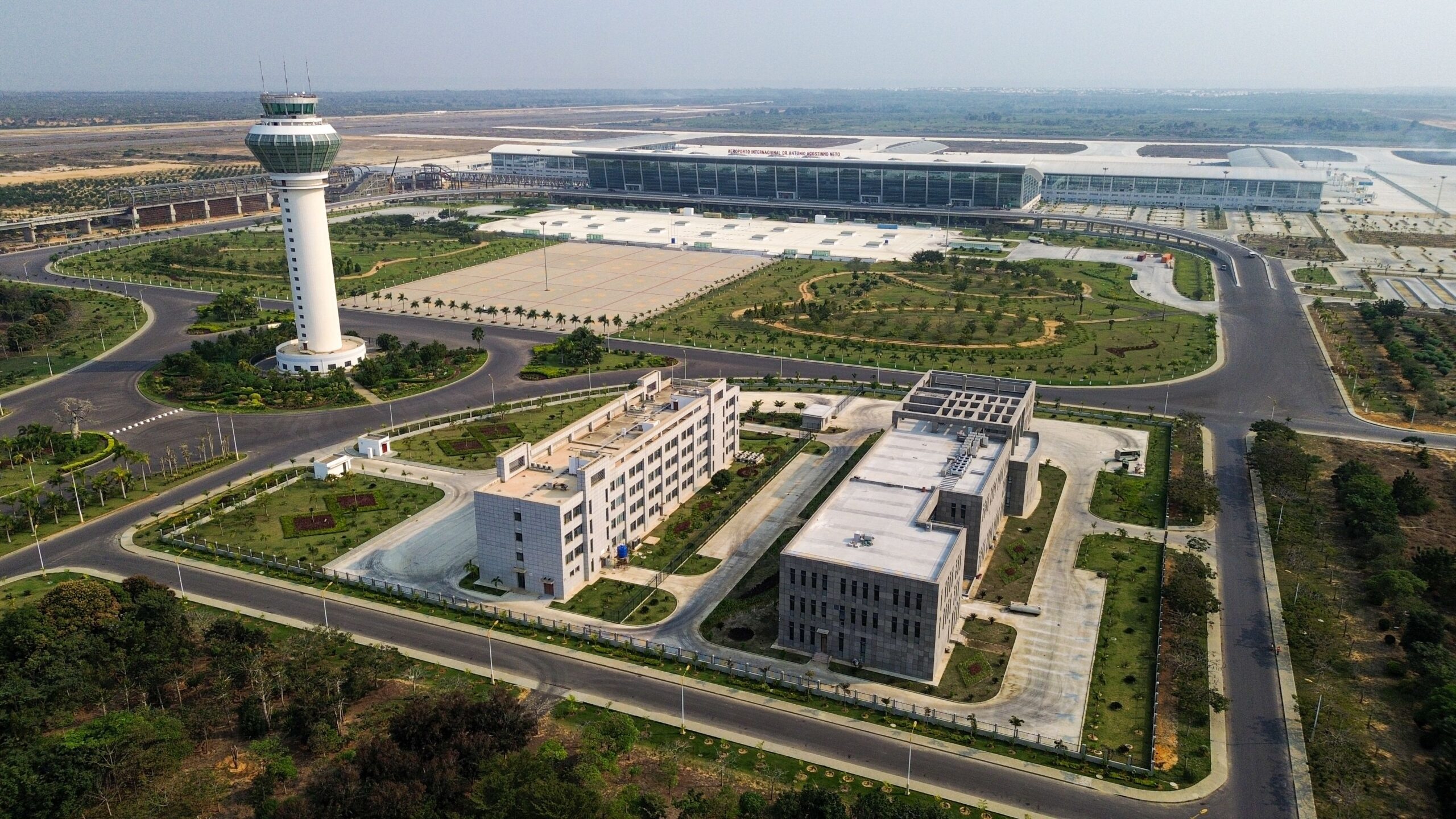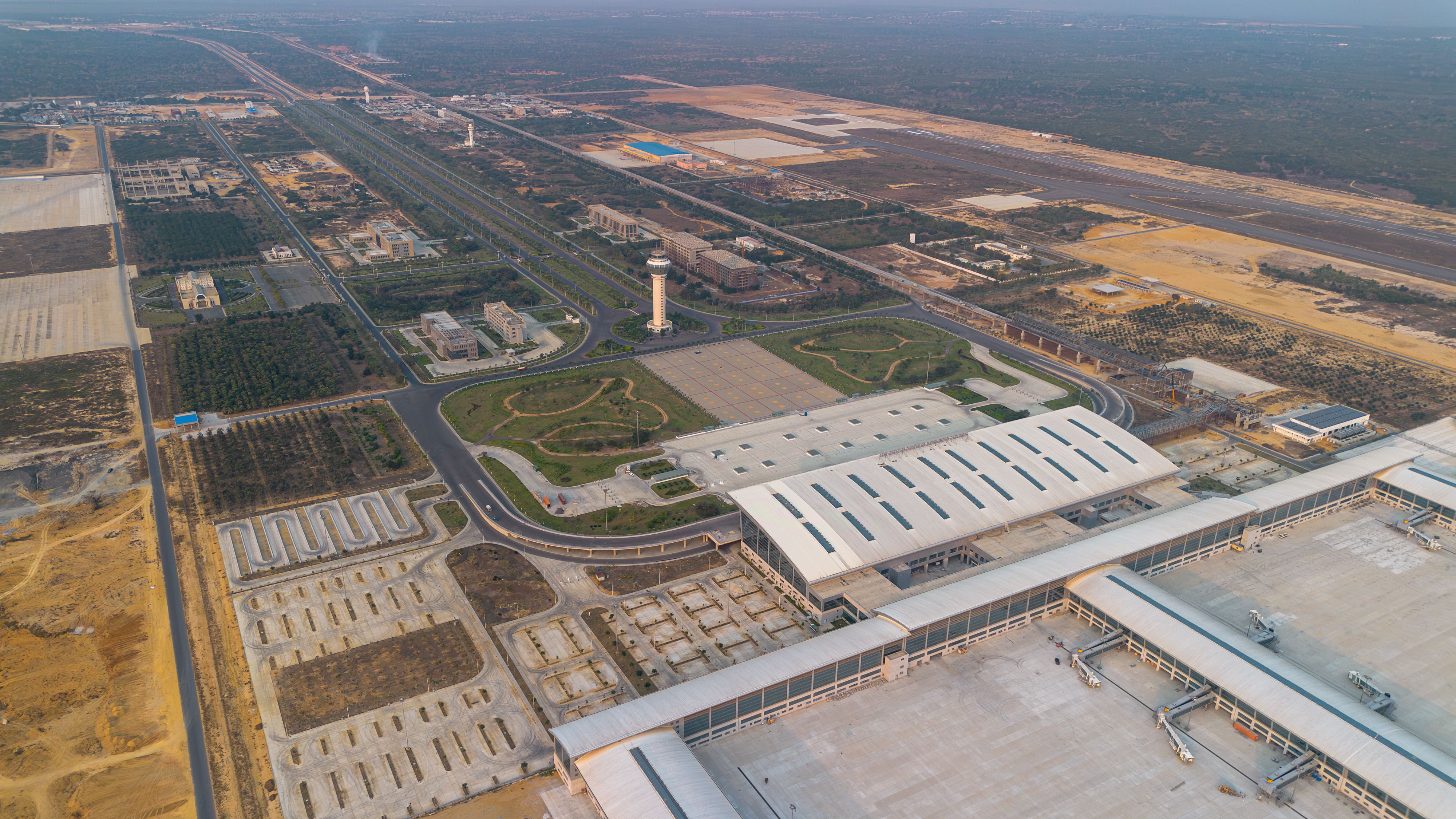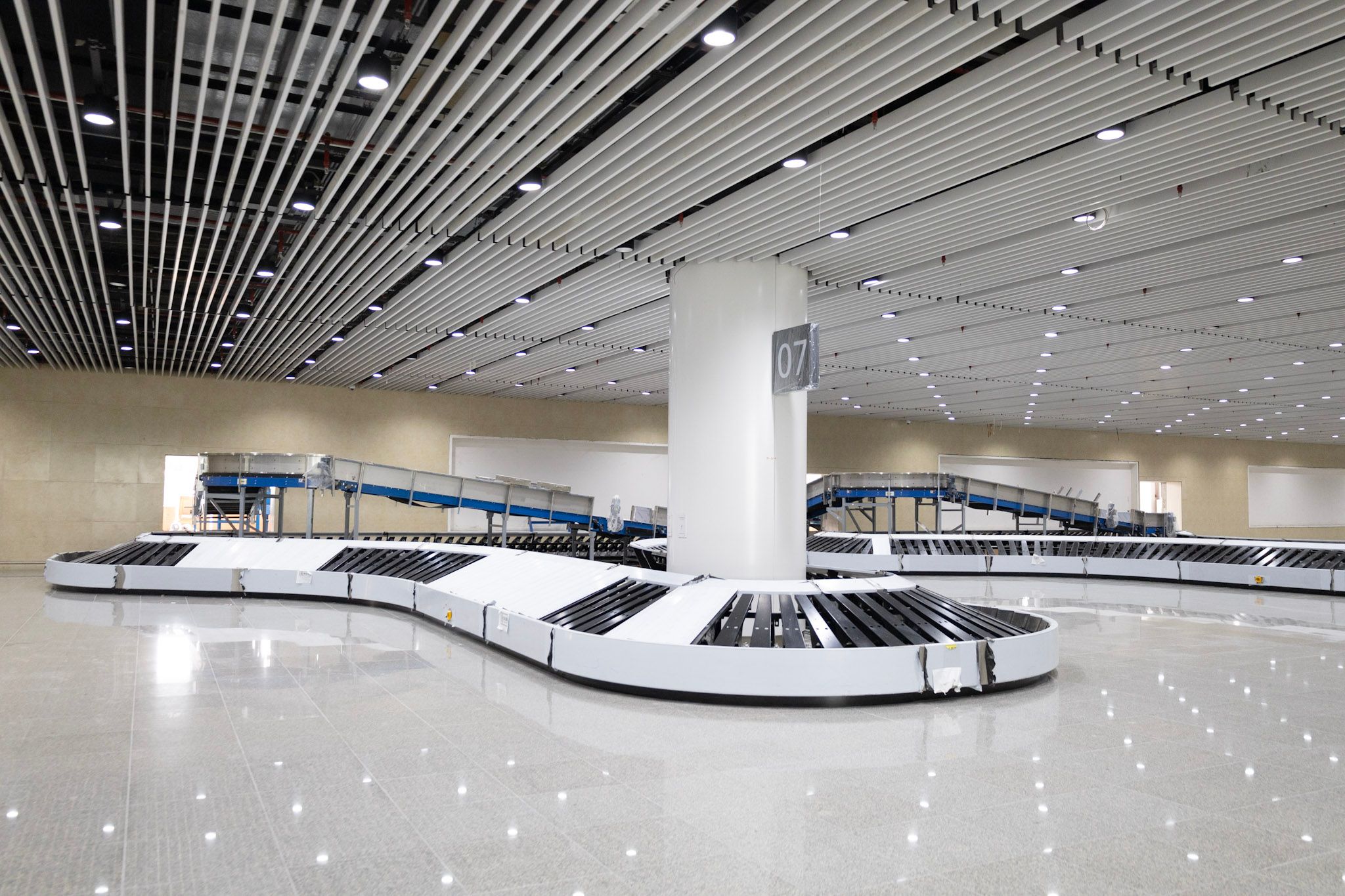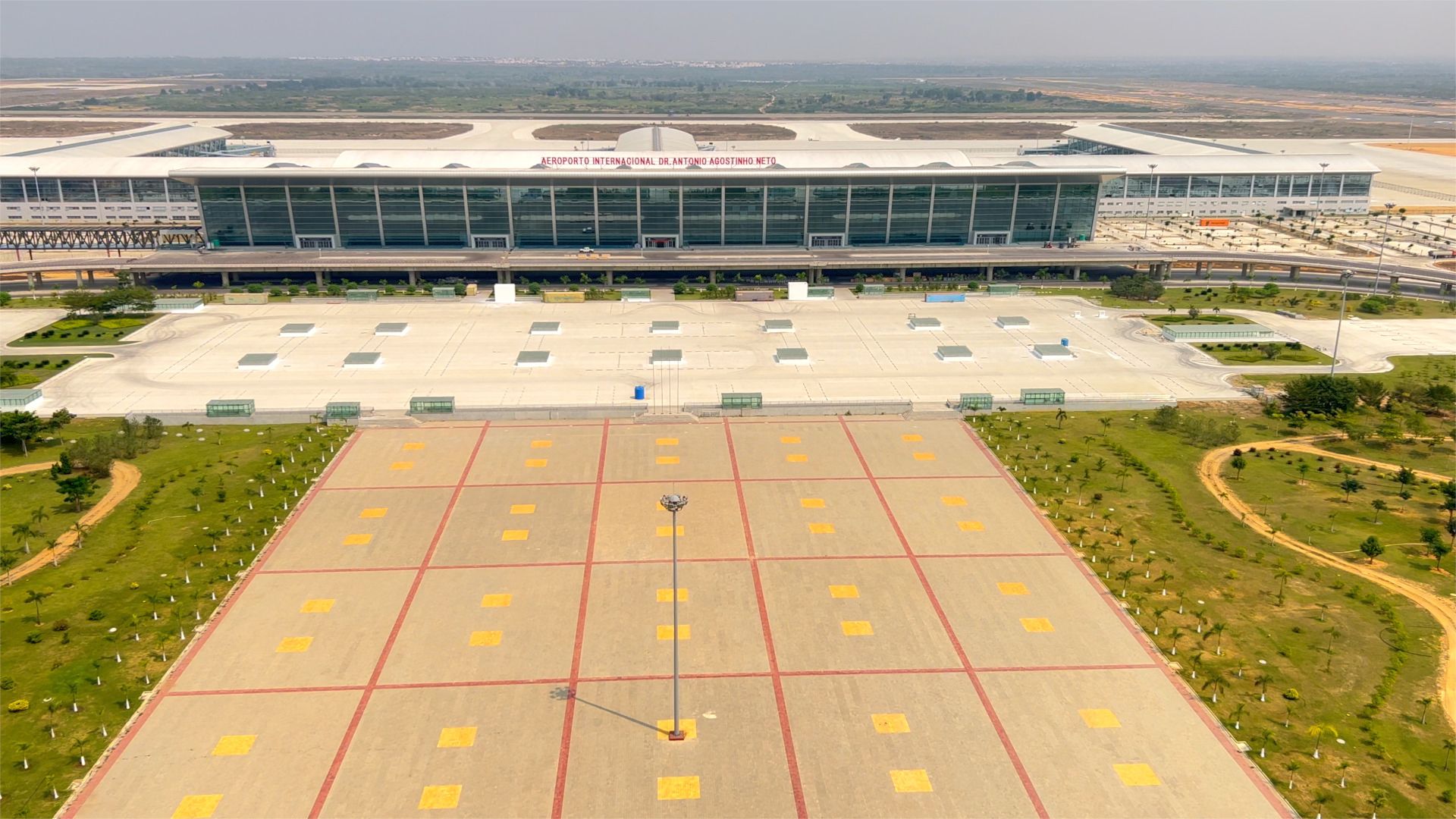Summary
- The new Dr. António Agostinho Neto International Airport (AIAAN) in Angola will serve as the country’s main hub for passenger and cargo services, gradually replacing Quatro de Fevereiro Airport (LAD).
- AIAAN has the capacity to handle 15 million passengers annually, along with significant cargo capacity. It is strategically located to support the development of Angola’s transport and tourism sectors.
- International airlines, including the national carrier, will eventually move to the new airport, while LAD will remain open for non-commercial air services, maintenance, and training.
The government of Angola has officially inaugurated the new Dr. António Agostinho Neto International Airport (AIAAN), which will serve as the country’s main hub for passenger and cargo services, gradually replacing Luanda’s Quatro de Fevereiro Airport (LAD).
The airport construction is estimated to have cost over $3 billion, including the supporting infrastructure. Angola’s Minister of Transport, Ricardo Viegas D’Abreu, told Simple Flying that it is a public investment fully funded by the government. This will be recovered through the concession of the airport’s management, development of the airport city, and engagement of the private sector to unlock the full potential of the new facilities.
About the new airport
AIAAN is located approximately 40 km east of central Luanda and sits on a 19 sq mi (50 sq km) precinct. It has two asphalt runways and an elevation of 522 ft (159 m). The northern runway is 13,779 ft (4,200 m) long and 196 ft (60 m) wide, while the southern runway is 12,467 ft (3,800 m) long and 196 ft (60 m) wide.
Photo: Angola Ministry of Transport
On the passenger side, AIAAN can handle 15 million travelers annually – 10 million international and 5 million domestic. Regarding its cargo capacity, it is capable of handling 286.6 million pounds (130,000 tonnes) annually in the first phase, with an expansion capacity of up to 970 million pounds (440,000 tonnes) per year.
The passenger terminal building, which occupies an area of about 1.7 million sq ft (160,000 sq m), has 12 aircraft finger docks. Other facilities include hotels, office buildings, hangars, and shops. The terminal building has modern baggage carousels and check-in counters and will soon feature restaurants and lounges.
Developing Angolan aviation and tourism
AIAAN will be one of the largest airports in Africa by passenger capacity. It will serve as a key regional and international hub to facilitate the further development of Angola’s transport and tourism sectors. As the government moves to diversify the country’s economy, the new airport will be an important point for trade, as other sectors are advancing quickly.
Photo: Angola Ministry of Transport
Its strategic location supports the creation of a robust logistics center to boost regional and international trade. Angola sees the potential of its aviation sector to promote the enhancement of other industries. It has developed a new and advanced civil aviation hub to play a critical role in connecting Africa to the rest of the world and contributing to the development of regional economies. Dr Ricardo Viegas D’Abreu added,
“I must emphasize that with this new airport, we intend to create an international civil aviation hub in Luanda, which will play a crucial role in connecting Africa and the other continents. It truly contributes to the development of our region’s economies in a logic of ever greater integration and creation of added value for all.”
“Africa needs to be linked to Europe, Asia, and the Americas. Why? Because passengers increasingly need to move and because air transport is increasingly necessary to shorten distances and satisfy the needs of various sectors of the world economy.”
Photo: Angola Ministry of Transport
Opening a larger hub also supports the government’s plan to develop tourism in Angola. As the first entry point for international travelers, AIAAN is expected to showcase Angola and receive many more tourists over the coming years. Furthermore, access to Angola is much easier, as the Southern African nation recently passed a resolution to allow a 90-day visa-free stay for foreign nationals from at least 98 countries. It is exclusively for tourism purposes and lists citizens of the US, the UK, China, Brazil, and Morocco, among others.
Moving to a new hub
According to D’Abreu, international airlines will eventually move to the new airport, including all passenger and cargo services. “We have had several meetings with various airlines to explain the advantages of this new infrastructure, particularly with the carriers that already operate in Angola, and which will obviously move to the new airport, where they will have the opportunity to provide their services at the level they do in other parts of the world,” he added.
The national carrier will be the first to move houses and will have its own terminal at AIAAN. Speaking to Simple Flying two months ago, TAAG Angola CEO Eduardo Farein Soria revealed that the carrier will commence operations at the new hub with cargo flights. By the beginning of March 2023, AIAAN will start receiving domestic passengers, and by mid-July, all other services will have moved to the new airport.
Photo: Angola Ministry of Transport
There may be a few days when services are operated from both facilities concurrently as stakeholders try to ensure a seamless transition. According to the transport minister, the strategic approach for TAAG is not just to focus on passenger and cargo transport but also maintenance and training. He has called AIAAN “the future” and welcomes the international community to this new gateway.
What about LAD?
Luanda’s Quatro de Fevereiro International Airport (LAD) is home to TAAG and currently serves as the country’s primary hub. It is connected to over 36 destinations in 22 countries and is served by 13 international airlines, including Air France, Tap Air Portugal, Lufthansa, Airlink, and Qatar Airways. However, with all carriers relocating, what will LAD be used for?
Quatro de Fevereiro will continue to operate, but not in the same capacity as in the past seven decades. With about 12 million inhabitants, Luanda is one of the most populated cities in Africa. This number is expected to grow to about 15 million by 2030, and with the simultaneous growth of the air transport sector, it makes sense to have two large airports in and near the capital.
Photo: Thiago B Trevisan | Shutterstock
LAD will remain open for non-commercial air services, including special and executive jet flights. It could also be used for maintenance and training by both local and international companies in the future. Although the construction of AIAAN was delayed by several years, the focus is now on developing it into the reliable regional hub it has the potential to be.
TAAG Angola currently serves about 14 domestic and 14 international destinations with a fleet of about 22 aircraft. With its brand transformation, as well as route and fleet development plans, we will see if Dr Antonio Agostinho Neto International fits as the national carrier’s new home.
What are your thoughts on Angola’s new international airport? Please let us know in the comments!





